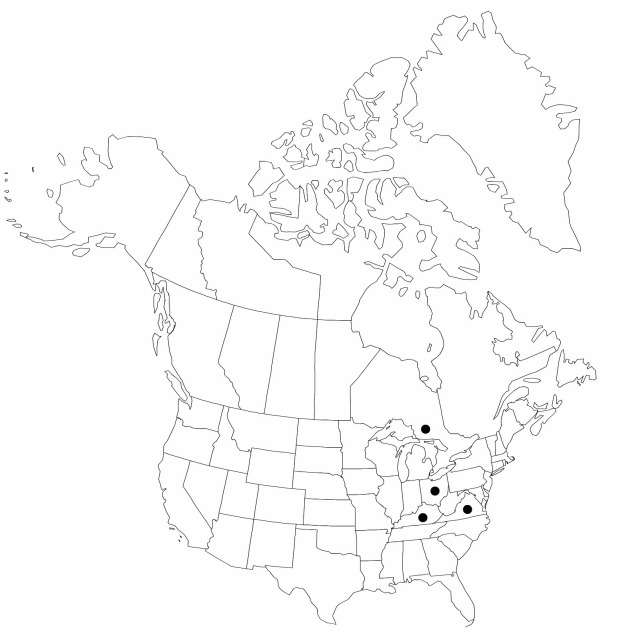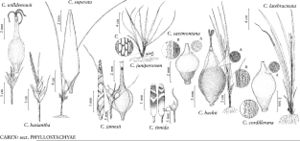Carex juniperorum
Syst. Bot. 18: 497, fig. 1. 1993.
Culms 2–6.5 (–9.1) cm, tallest ones 3.2–9.1 cm. Leaves: basal sheaths reddish-brown; blades green, eceeding culms, 2–4 (–5) mm wide, coriaceous, margins green, scabrous. Lateral spikes 1–3, basal, on erect to spreading peduncles. Terminal spikes with staminate portion (5–) 7–15 (–21) -flowered, 3–8 × 0.6–1.2 mm; pistillate portion (2–) 4–9-flowered. Pistillate scales green, margins 1.2–3 mm wide, not more than 1.5 times as wide as and not concealing perigynia, apex long-acute; distal scales with hyaline margins to 0.3 mm wide, apex acute, awnless. Staminate scales green, tinged brown or reddish-brown, ovate to oblong, 0.8–1.5 × 0.8–1.2 mm, margins connate for most of their length, enfolding scales above, hyaline, white, apex truncate to obtuse (sometimes mucronate), erose. Anthers 1–1.5 mm. Perigynia green, sometimes flecked with reddish-brown, obovoid to ellipsoid, 3.8–5.1 × 1.5–2 mm, tightly enveloping achenes, apex abruptly tapering; beak (1.2–) 1.4–2.1 mm, scabrous. Stigmas filiform, flexuous, long, slender, strongly papillose. Achenes dark-brown, globose to ellipsoid, 1.9–2.5 × 1.5–2 mm.
Phenology: Fruiting spring–summer (early May–late Jun).
Habitat: Open, vernally moist, red juniper-oak glades, alvars, prairie openings, on clay soils derived from crumbling limestone
Elevation: 100–300 m
Distribution

Ont., Ky., Ohio, Va.
Discussion
Of conservation concern.
Selected References
None.
Lower Taxa
"shortened" is not a number."widest" is not a number."connate" is not a number.
